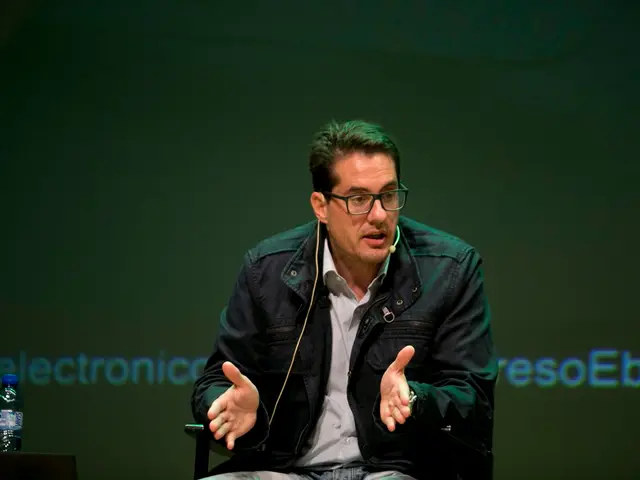Polaroid announces the release of a groundbreaking anti-AI advertising campaign, potentially claiming the title of the best such ad for the entire year.
In a bold move to counter the digital over-saturation and AI dominance, Polaroid has launched a new campaign for its Flip camera titled 'The Camera for an Analogue Life'. The campaign, designed in-house by Polaroid, aims to promote the brand's new product while encouraging passersby to reconsider their reliance on digital technology and appreciate the tangible and authentic aspects of life.
The campaign's placement in high-traffic areas such as JFK Airport, city centers, busy streets, Apple Stores, and Google offices in New York City and London, expands its reach beyond just Polaroid's traditional audience. The strategic placement near tech-centric businesses like Apple and Google creates a striking juxtaposition, prompting people to reconsider their relationship with the digital world.
Patricia Varella, Brand and Creative Director at Polaroid, says the campaign is a reminder of the importance of connection and living in the moment. One of the campaign's copy lines is, "Real stories. Not stories & reels." Another is, "AI can't generate sand between your toes." These provocative statements highlight the unique and analog nature of Polaroid's products.
The campaign includes Polaroid photos and thought-provoking copy lines that have received positive feedback online. Social media users have praised the aesthetic and the message, with many expressing a desire for a more authentic and tangible experience. The campaign's message may be particularly appealing to individuals who feel overwhelmed by digital technology.
The launch of 'The Camera for an Analogue Life' campaign is an example of advertisements that tap into tech fatigue, a trend where brands are focusing on a rejection or slowdown of constant digital and AI tool adoption, emphasizing simpler, more human, or analog experiences as a refreshing alternative.
While specific campaigns similar to Polaroid’s were not directly identified, marketing analysis in 2025 suggests that many marketers and consumers face AI fatigue, where the overwhelming pressure to adopt nonstop new tools leads to pushback or weariness. Successful campaigns often embrace simplicity rather than pushing more technology, paralleling Polaroid’s analog appeal.
The broader issue of ad fatigue—the burnout consumers feel from repetitive digital ads—has led brands to adopt omnichannel strategies and creative storytelling that break through digital noise and tech saturation. Campaigns addressing tech fatigue generally lean into authenticity, humor, and engaging emotional narratives over high-tech gimmicks, countering consumer fatigue with relatable, human-centered messaging.
In essence, while Polaroid’s campaign explicitly sells an analogue life as a solution to digital overload, other ads reflecting tech fatigue similarly stress stepping back from constant digital immersion, embracing human connection, simplicity, or nostalgia to resonate with fatigued consumers. This often appears in brands promoting offline experiences, simple tech, or products positioned as antidotes to digital overwhelm.
The campaign's placement in busy streets and city centers may also appeal to individuals who are looking for a break from the digital world and a reminder of the importance of connection and living in the moment. As the digital age continues to evolve, campaigns like Polaroid's 'The Camera for an Analogue Life' are poised to resonate with consumers seeking a more authentic and tangible connection with the world around them.
- The in-house designed campaign by Polaroid for the Flip camera, titled 'The Camera for an Analogue Life', features a creative layout with thought-provoking copy lines and posters, showcasing Polaroid photos.
- The strategic placement of these campaign posters in high-traffic areas like JFK Airport, city centers, busy streets, Apple Stores, and Google offices in New York City and London captures a broader audience.
- The campaign, driven by a desire for an authentic and tangible experience, features a 3D print quality and vibrant color palette that aligns with the art of design.
- The creative team behind the campaign, led by Patricia Varella, Brand and Creative Director at Polaroid, infused a vision of upholding human connection and the importance of living in the moment into the design of the campaign.
- As technology continues to dominate modern lifestyles, the campaign's message of stepping back from digital overload and embracing a more simplistic, tangible, and human-centered experience is an inspiring approach in marketing.
- To escape the ad fatigue and digital noise, many brands are turning to campaigns that highlight the importance of authenticity, human connection, and simplicity within their branding and design, much like Polaroid’s 'The Camera for an Analogue Life' campaign.




